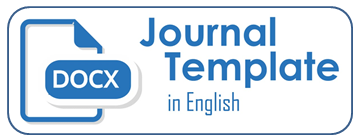Job Analysis Using Conventional and Precast Methods on Jalan Konggoasa Kendari City
Keywords:
Drainage, Conventional, PrecastAbstract
The increasing population growth of Kendari City demands the development of infrastructure development that continues to grow so that there must be road arrangements and systems irrigation or drainage network to avoid overflowing puddles on roads in Konggoasa Kendari City. Drainage is an infrastructure that functions to drain surface water to water receiving bodies and or to artificial infiltration structures. In other words, drainage has the meaning of draining, throwing or diverting water. The objectives of this study are: (1) to determine the cost comparison using the conventional method (cobblestone) and the precast method (u ditch). (2) to find out the comparison of time using the conventional method (cobblestone) and the precast method (u ditch). on the project implementation work on road Konggoasa Kendari City. The results of this study indicate that the work cost for the conventional method is IDR. 193.867.145 (One Hundred Ninety-Three Million Eight Hundred Sixty-Seven Thousand One Hundred Forty-Five Rupiah), and for the precast cost of IDR. 781.130.738 (Seven Hundred Eighty-One Million One Hundred Thirty Thousand Seven Hundred Thirty-Eight Rupiah), with the percentage of the cost of the conventional method being 75% cheaper than the precast method. And in terms of time for work using the conventional method for 66 days and for the precast method for 47 days with the percentage of time the precast method is 29% faster than the conventional method.
References
Falah, R. E. 2019. Analisis biaya pekerjaan drainase berdasarkan metode konvensional dengan metode pracetak U Ditch. Skripsi. Universitas Islam Indonesia.
Hidayah, R. Ridwan, A. Cahyo, Y. SP. (2015). Analisa Perbandingan Manajemen Waktu Antara Perencanaan dan Pelaksanaan pondasi. Jurnal Manajemen Teknologi dan Teknik Sipil. Vol. 1(2), pp : 281-290.
Peraturan Menteri Pekerjaan Umum Dan Perumahaan Rakyat Republik Indonesia Nomor : 12/PRT/M/2014. Tentang Penyelenggaraan Sistem Drainase Perkotaan.
Pratama, f. 2020. Perhitungan Biaya dan Waktu Pekerjaan Drainase Pasangan Batu Kali Dengan Konsep Penambahan Bioporin. Skripsi, Universitas Jember.
Prihantara, A., Hartono, A. A., Wardani, P. M. 2018. Studi kasus pengembangan sistem informasi manajemen proyek konstruksi. E-Journal Bangun Rekaprima, Vol. 4(2), pp : 1-10
Fairizi, D. 2015. Analisis dan evaluasi saluran drainase pada kawasan perumnas talang kelapa di subdas lambidaro Kota Palembang. Jurnal Teknik Sipil dan Lingkungan, Vol. 3(1), pp : 755-765
Firdausi, S. N., Effendi, M., & Harsanti, W. 2021. Perencanaa ulang sistem drainase perkotaan di jalan Borobudur – jalan candi telaga wangi Kota Malang. Jurnal Online Skripsi Manajemen Rekayasa Konstruksi Polinema, Vol. 2(1), pp : 24-28
Laksono, T. D. 2007. Produktivitas pada proyek konstruksi. Jurnal Teodolita, Vol. 8(2), pp : 11-18
Wagola, E. S., Djamaluddin, R., Irmawaty, R. 2017. Kapasitas Lentur Saluran Drainase Beton Pracetak ( U-DITCH ). journal sains dan teknoligi, Vol. 6(1), pp : 99-103
Downloads
Published
How to Cite
Issue
Section
License
Copyright (c) 2022 International Association of Management and Human Resource Development

This work is licensed under a Creative Commons Attribution 4.0 International License.

This work is licensed under a Creative Commons Attribution 4.0 International License.







